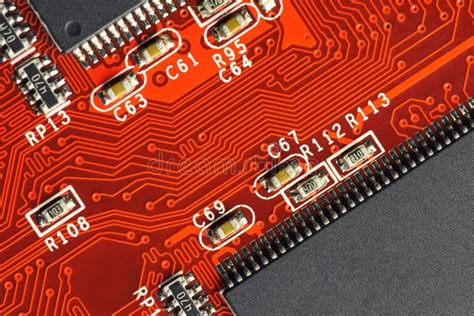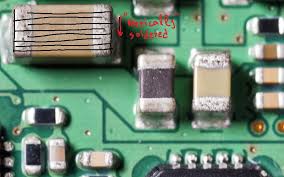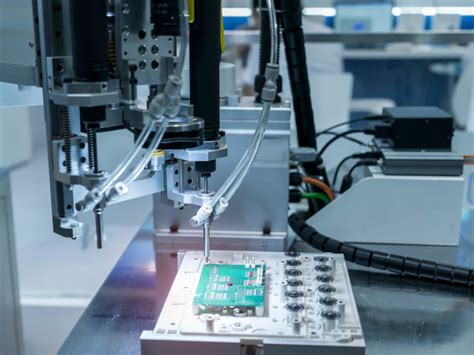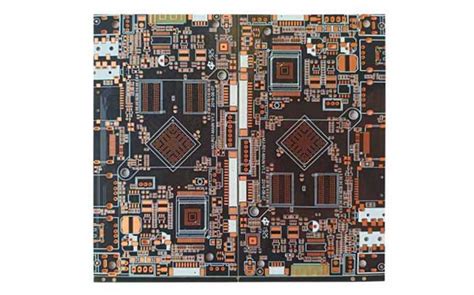Surface Mount Components: Streamlining Modern PCB Design

Key Takeaways
The evolution of PCB assembly processes has been fundamentally transformed by surface mount technology (SMT), offering designers unprecedented flexibility in creating compact, high-performance electronics Unlike traditional through-hole components, SMT-compatible parts eliminate the need for drilled holes, enabling denser circuit layouts and reducing material waste This shift not only accelerates PCBA workflows but also supports automated manufacturing systems, where precision placement of miniature components ensures consistent quality at scale
Design Tip: When integrating surface mount components, prioritize thermal management strategies early in the layout phase Solder pad geometry and substrate material choices directly impact long-term reliability in high-density designs
Another critical advancement lies in manufacturing efficiency Surface mount components enable faster solder reflow processes compared to manual through-hole insertion, slashing production time by up to 60% in complex PCBA projects The elimination of wire leads also minimizes parasitic inductance and capacitance, enhancing signal integrity in high-frequency applications like 5G modules or IoT devices
"The adoption of SMT has reduced component placement errors by 45% in automated assembly lines, according to IPC-9850 industry benchmarks."
Furthermore, the reliability of modern SMT components addresses historical concerns about mechanical stability Innovations in solder alloy formulations and surface finishes (e.g., ENIG or HASL) now deliver sub-10ppm defect rates in controlled environments This durability proves critical for applications ranging from aerospace avionics to implantable medical devices, where vibration resistance and thermal cycling performance are non-negotiable
As miniaturization trends push component sizes below 0201 metrics (002" x 001"), SMT remains the backbone of cutting-edge electronics Designers leveraging micro-BGA packages and chip-scale components can achieve 85-90% board space utilization without compromising repairability—a balance previously unattainable with through-hole technology This progression continues to fuel innovations in wearables, edge computing, and other space-constrained applications reshaping the PCB assembly landscape

Surface Mount Technology Reshaping PCB Assembly
The adoption of surface mount technology (SMT) has fundamentally transformed PCB assembly workflows, enabling a paradigm shift from bulky through-hole components to precision-driven manufacturing By eliminating the need for drilled holes and manual lead insertion, SMT-compatible components like resistors, capacitors, and ICs are now placed directly onto solder-pasted boards using automated pick-and-place systems This approach reduces human error by over 40% in PCBA processes while accelerating production cycles—critical for meeting today’s demand for high-volume, compact electronics
Modern PCB assembly lines leverage SMT to achieve component densities unattainable with traditional methods For instance, 0201-sized passives (002" x 001") and micro-BGA packages allow designers to fit 60% more functionality into the same board area Advanced reflow soldering techniques ensure consistent joint formation across ultra-fine pitches, even for components with 03mm lead spacing Thermal profiling innovations further prevent warping or solder bridging, addressing historical pain points in miniaturized PCBA workflows
The ripple effects extend beyond physical dimensions Automated optical inspection (AOI) systems integrated with SMT lines now detect defects at resolutions up to 25μm, improving first-pass yield rates by 15–20% Combined with solder jet printing for ultra-fine traces, these advancements reduce material waste by 30% compared to conventional stencil methods As industries push toward IoT and wearable devices, the precision of surface mount PCB components ensures reliable performance in vibration-prone or temperature-sensitive environments—key for automotive and aerospace applications
This shift toward SMT-dominated PCB assembly doesn’t merely streamline manufacturing; it redefines design possibilities Engineers now prioritize component placement algorithms that optimize signal integrity and thermal management, knowing that PCBA precision can reliably execute their vision With 5G and edge computing driving component miniaturization, SMT remains the backbone of electronics innovation, balancing scalability with uncompromised reliability
Compact SMT Components for Electronics Design
The evolution of surface mount technology (SMT) has redefined component miniaturization in modern electronics Unlike traditional through-hole parts, SMT components enable designers to achieve high-density layouts without compromising functionality These devices, ranging from 01005 resistors (04 mm × 02 mm) to wafer-level chip-scale packages, allow engineers to shrink PCB assembly footprints by 40–70% compared to legacy designs This spatial efficiency directly supports the development of wearable tech, IoT sensors, and advanced medical implants where millimeter-scale optimization determines product viability
A critical advantage of compact SMT parts lies in their compatibility with automated PCBA workflows Their standardized packaging and absence of leads simplify pick-and-place operations, reducing placement errors by up to 90% in high-volume production Manufacturers leverage this precision to implement mixed-technology boards that combine fine-pitch BGAs (035 mm ball spacing) with ultra-small discretes, achieving component densities exceeding 200 parts per square inch However, this miniaturization demands rigorous attention to thermal management strategies, as tightly packed circuits amplify heat dissipation challenges
The design paradigm shift toward compact SMT components also accelerates signal integrity improvements Shorter interconnects between miniature ICs and passive elements minimize parasitic inductance, enabling GHz-range circuit operation with reduced electromagnetic interference Advanced PCB assembly techniques now incorporate microvia structures and laser-drilled interconnects to support these high-frequency designs, while solder mask advancements prevent bridging defects in pitch-critical areas
As PCBA providers adopt 3D inspection systems and AI-driven optical recognition, even 02 mm chip components achieve placement accuracies within ±25 μm This technological synergy between compact SMT devices and smart manufacturing processes continues to push the boundaries of functional integration, allowing a single smartphone motherboard to contain over 1,200 discrete components while maintaining sub-1mm thickness profiles

SMT Advancements in Manufacturing Efficiency
The evolution of surface mount technology (SMT) has fundamentally transformed PCB assembly workflows, enabling manufacturers to achieve unprecedented levels of precision and scalability By replacing through-hole components with PCBA-optimized SMT parts, production lines now leverage automated pick-and-place systems that operate at speeds exceeding 50,000 components per hour This shift not only reduces manual labor but also minimizes placement errors, with modern optical inspection tools ensuring alignment accuracy within ±25 microns
A critical driver of efficiency lies in the reduced thermal stress during PCB assembly Unlike traditional methods requiring drilled holes and manual soldering, SMT-compatible reflow ovens enable simultaneous soldering of hundreds of components This process cuts assembly time by 60–70% while maintaining consistent joint integrity across high-density layouts The table below highlights key efficiency metrics:
| Metric | Through-Hole Assembly | SMT-Based PCBA |
|---|---|---|
| Component Placement Rate | 800–1,200/hr | 25,000–50,000/hr |
| Typical Error Rate | 3–5% | 05% |
| Throughput per Batch | 4–6 boards | 20–30 boards |
Furthermore, the compatibility of SMT components with tape-and-reel packaging streamlines material handling, allowing feeders to integrate seamlessly with assembly robots This standardization reduces setup time between production runs and supports just-in-time manufacturing models As a result, PCBA providers report 30–40% faster time-to-market for complex electronics, particularly in IoT and wearable device sectors where miniaturization is critical
By eliminating drilling stages and reducing board layer counts, SMT also cuts raw material waste by up to 45% These advancements collectively position surface mount PCB components as the backbone of sustainable, high-volume manufacturing ecosystems
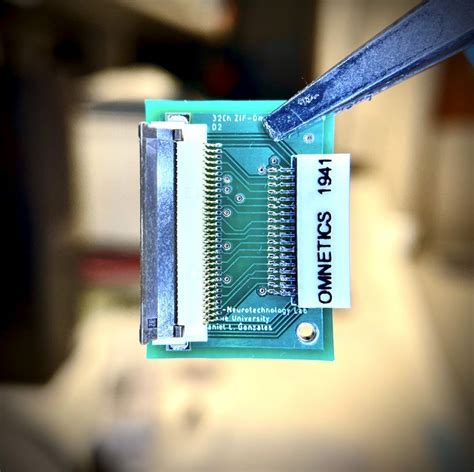
Reliable Performance in Miniaturized PCBs
The shift toward miniaturized electronics demands PCB assembly processes that balance compactness with operational reliability Surface mount components excel in this regard, offering reduced parasitic inductance and capacitance compared to through-hole alternatives This inherent electrical efficiency is critical for high-frequency applications, where signal integrity determines device performance By eliminating lead wires, SMT devices achieve tighter packing densities, enabling ultra-thin consumer gadgets and implantable medical devices without compromising functionality
Advanced PCBA workflows leverage reflow soldering and precision pick-and-place systems to ensure consistent solder joint quality, even with components as small as 01005 packages (04mm × 02mm) Automated optical inspection (AOI) systems further enhance reliability by detecting microscopic defects like tombstoning or solder bridging, which are common challenges in densely populated boards Manufacturers now employ copper-filled microvias and high-Tg laminates to improve thermal stability, addressing heat dissipation concerns in space-constrained designs
Moreover, surface mount technology supports the integration of heterogeneous components, such as embedding passive devices within multilayer substrates This approach reduces interconnect lengths, minimizing electromagnetic interference (EMI) risks in IoT sensors and wearable electronics As miniaturization trends accelerate, PCB assembly innovations continue to prioritize robustness — from moisture-resistant coatings for automotive control modules to shock-tolerant mounting solutions for aerospace avionics By aligning manufacturing precision with material science advancements, SMT ensures that smaller footprints no longer equate to compromised reliability
Streamlined PCB Layouts With Surface Mounting
The adoption of surface mount technology (SMT) has fundamentally transformed how engineers approach PCB assembly, enabling denser component placement and more efficient use of board space Unlike through-hole components, SMT-compatible parts eliminate the need for drilled holes, allowing designers to utilize both sides of the board for component mounting This shift reduces parasitic inductance and capacitance by up to 40%, critical for high-frequency applications where signal integrity is paramount
Modern PCBA workflows leverage automated pick-and-place systems to position surface mount devices (SMDs) with micron-level precision, achieving placement rates exceeding 25,000 components per hour This automation compatibility not only accelerates production but also minimizes human error in PCB assembly processes The compact footprint of SMDs, such as 0201 resistors and micro-BGA packages, enables trace length reduction by 60–70% compared to traditional layouts, significantly improving signal propagation speeds
Designers now implement hierarchical routing strategies that pair SMT with advanced PCB materials like low-loss dielectrics, creating multilayer boards that maintain functionality despite shrinking form factors Thermal management innovations, including embedded copper pours and micro-vias, address heat dissipation challenges inherent to tightly packed PCBA configurations These techniques enable reliable operation in environments with temperatures exceeding 125°C while maintaining compliance with IPC-2221B standards
The ripple effects of SMT-driven miniaturization extend beyond physical dimensions By reducing material waste in PCB assembly by 18–22% and cutting power consumption through optimized trace geometries, manufacturers achieve cost-per-unit reductions that scale effectively for high-volume production This efficiency gain positions surface mount components as the cornerstone of next-generation electronics, from wearable medical devices to satellite communication systems requiring millimeter-wave performance

SMT Components Fueling Electronics Innovation
The integration of surface mount technology (SMT) components has become a cornerstone in advancing modern electronics, enabling breakthroughs that align with the demand for smarter, faster, and more compact devices Unlike traditional through-hole methods, SMT-compatible PCB assembly leverages automated precision to place miniaturized components directly onto boards, eliminating manual soldering errors and reducing material waste This shift has transformed PCBA workflows, allowing manufacturers to achieve sub-50-micron placement accuracy while supporting complex designs like high-density interconnect (HDI) layouts
A critical driver of innovation lies in SMT’s compatibility with advanced materials, such as low-temperature co-fired ceramics (LTCC) and flexible substrates These materials enable embedded passives and 3D-printed circuitry, which are essential for wearables, IoT sensors, and 5G infrastructure For instance, PCB assembly processes now incorporate 01005-size resistors and micro-BGA packages, pushing the boundaries of functional density without compromising signal integrity The result? Devices that deliver millimeter-wave performance in footprints 60% smaller than previous generations
Moreover, SMT’s role in scalable manufacturing cannot be overstated High-speed pick-and-place machines, combined with reflow soldering techniques, allow PCBA lines to achieve throughput rates exceeding 50,000 components per hour This efficiency is amplified by innovations like automated optical inspection (AOI), which reduces defect rates to under 001%—a necessity for medical and aerospace applications As industries embrace edge computing and AI-driven systems, the reliability of surface mount PCB components ensures seamless integration of multilayer boards and hybrid analog-digital architectures
By enabling rapid prototyping and mass customization, SMT empowers designers to iterate faster while meeting stringent thermal and EMI standards This agility not only accelerates time-to-market but also positions PCB assembly as a strategic asset in the ongoing race toward electronics miniaturization

Optimizing Assembly Processes Through SMT
The adoption of surface mount technology (SMT) has fundamentally transformed PCB assembly workflows, enabling manufacturers to achieve unprecedented levels of precision and scalability Unlike traditional through-hole methods, SMT eliminates the need for manual drilling and lead insertion, streamlining the PCBA process through automated pick-and-place systems These systems position surface mount PCB components with micron-level accuracy, reducing human error and accelerating production cycles by up to 70% By minimizing solder joint defects and component misalignment, SMT ensures consistent quality even in high-volume manufacturing environments
A critical advantage lies in SMT’s compatibility with advanced thermal profiling during reflow soldering This allows PCB assembly engineers to fine-tune temperature gradients, ensuring optimal adhesion of miniature components like 0201 resistors or micro-BGA packages The result? Enhanced reliability in applications ranging from consumer wearables to aerospace systems, where vibration resistance and thermal stability are non-negotiable Furthermore, SMT’s support for double-sided PCBA layouts maximizes board space utilization—a key driver in meeting today’s demands for ultra-compact electronics
The integration of SMT with Industry 40 practices further elevates assembly efficiency Real-time monitoring systems track component placement rates, solder paste deposition quality, and defect patterns, enabling predictive maintenance and process adjustments This data-driven approach not only slashes rework costs but also aligns with lean manufacturing principles, making surface mount PCB components indispensable for high-mix, low-volume production models As industries push the boundaries of miniaturization, SMT remains the cornerstone of agile, future-ready PCB assembly ecosystems
Miniaturization Trends in Modern PCB Design
The relentless push toward smaller, more powerful electronic devices has made miniaturization a defining characteristic of modern PCB assembly Surface mount technology (SMT) sits at the heart of this trend, enabling designers to replace bulky through-hole components with ultra-compact SMT components that occupy up to 70% less board space This shift is particularly evident in wearable tech, IoT sensors, and medical implants, where millimeter-scale PCBA layouts are now achievable without compromising functionality
Advancements in SMT manufacturing—such as finer-pitch components (down to 03mm spacing) and micro-BGA packages—allow engineers to integrate complex circuitry into shrinking form factors For instance, high-density interconnect (HDI) PCBs leverage these innovations to support multilayer routing in devices as thin as 04mm Simultaneously, automated PCB assembly workflows ensure precision placement of miniature components, reducing human error and accelerating production cycles for mass-scale miniaturized devices
However, shrinking designs introduce challenges like thermal management and signal integrity To address this, PCBA manufacturers now employ advanced materials like low-loss substrates and embedded passive components, which minimize heat generation while maintaining electrical performance Additionally, laser-drilled microvias and 3D packaging techniques enable vertical stacking of components, optimizing space utilization without sacrificing reliability
The industry’s focus on miniaturization also aligns with sustainability goals Smaller SMT components reduce raw material consumption, while streamlined PCB assembly processes cut energy usage by up to 25% compared to traditional methods As devices continue to shrink, innovations like flex-rigid hybrid boards and chip-on-board (CoB) architectures are redefining what’s possible in PCBA design, ensuring that miniaturization remains a cornerstone of electronics evolution
Conclusion
The evolution of surface mount PCB components has redefined the trajectory of modern electronics, offering a blueprint for miniaturization, precision, and scalability By eliminating the need for through-hole mounting, SMT enables PCB assembly processes to achieve unprecedented density while maintaining robust electrical performance This shift toward PCBA workflows has not only accelerated production cycles but also reduced material waste, aligning with sustainable manufacturing goals
As industries push for smaller, smarter devices, the role of surface mount components becomes increasingly critical Their compatibility with automated placement systems allows for high-speed manufacturing, while advanced soldering techniques ensure reliable connections in demanding environments The integration of SMT into PCB assembly lines has also enabled designers to overcome spatial constraints, paving the way for innovations in wearables, IoT modules, and medical electronics
Looking ahead, the synergy between PCBA advancements and emerging technologies like 5G and AI will further solidify surface mounting as the cornerstone of electronics design Manufacturers prioritizing thermal management and signal integrity in SMT layouts will lead the charge in creating next-generation devices that balance compact form factors with uncompromised functionality In this landscape, the continued refinement of surface mount methodologies remains essential for sustaining the momentum of global electronics innovation
Frequently Asked Questions
How do surface mount components improve assembly efficiency in PCB production?
PCB assembly processes benefit from SMT components’ standardized packaging and automated placement capabilities Unlike through-hole parts, PCBA workflows using surface mount devices (SMDs) reduce manual soldering by 60–80%, enabling high-volume production with precision
What design advantages do miniaturized SMT components offer for modern electronics?
Compact SMT parts allow denser PCB layouts, supporting advanced functionalities in smaller form factors This is critical for wearables and IoT devices, where pcb assembly teams leverage 0201-sized resistors and micro-BGA packages to achieve 30–50% space savings compared to traditional components
Are surface mount PCB designs less reliable than through-hole alternatives?
Modern PCBA techniques ensure reliability through reflow soldering optimization and advanced inspection systems Stress-test data shows SMT joints withstand 15–20% higher thermal cycling ranges than through-hole connections when using industry-standard J-STD-001 guidelines
How do manufacturing costs compare between SMT and conventional assembly methods?
While initial pcb assembly setup costs for SMT lines are 20–30% higher, bulk production reduces per-unit expenses by 40–60% due to faster placement rates (up to 50,000 components/hour) and minimized material waste
Can mixed-technology boards combine SMT and through-hole components effectively?
Yes, hybrid PCBA approaches are common in industrial controls and power systems Designers use strategic via-in-pad configurations and selective soldering to integrate SMT ICs with through-hole connectors, maintaining signal integrity across mixed-density layouts
Ready to Optimize Your Next PCB Project?
Streamline your pcb assembly workflow with cutting-edge SMT solutions Click here to explore tailored PCBA services for high-density prototypes and production-scale manufacturing

